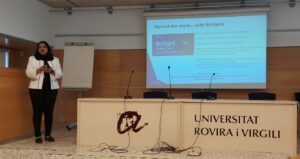Marsal’s group at the CEN2023 conference in Zaragoza
By K. Acosta and O. Almora
The ‘Spanish Conference on Nanophotonics – Conferencia Española de Nanofotónica (CEN2023)’ took place in Zaragoza, Spain, from the 12th to the 14th of June 2023.
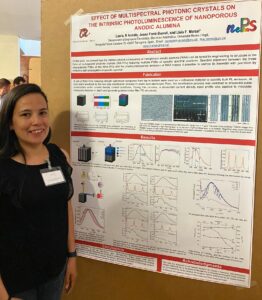 Karen Acosta presented her poster titled ” EFFECT OF MULTISPECTRAL PHOTONIC CRYSTALS ON THE INTRINSIC PHOTOLUMINESCENCE OF NANOPOROUS ANODIC ALUMINA”
Karen Acosta presented her poster titled ” EFFECT OF MULTISPECTRAL PHOTONIC CRYSTALS ON THE INTRINSIC PHOTOLUMINESCENCE OF NANOPOROUS ANODIC ALUMINA”
Nanoporous anodic alumina (NAA) is a promising material formed by the electrochemical oxidation of aluminum, a cost-effective and fully scalable process compatible with conventional micro and nanofabrication approaches that allow the precise control over the geometry and distribution of the pores. The optical properties of NAA depend on intrinsically upon its nanoporous structure. Therefore, to engineer the nanoporous structure of NAA provides novel means of modulating its refractive index in a multidimensional mode to fabricate advanced materials with unique optical properties. Photonic crystals (PC) can be obtained by NAA pore engineering. NAA-PCs are obtained by applying a sinusoidal anodization current, which results in a continuous modulation of the pore diameter along its length. The application of this modulation results in a one-dimensional photonic crystal with a periodic variation of the refractive index along the pore direction and a photonic stop band Furthermore, NAA has high chemical and physical stability, provides stable optical signals without further passivation; and its surface chemistry can be easily modified with a broad range of molecules. In addition, photoluminescence (PL) is an interesting optical property of NAA by which a material absorbs photons of a given energy state from a source (i.e.it is excited) and emits photons of a lower energy state as a result of that excitation. This optical property is used in several applications like: optoelectronics, photovoltaics, sensing and drug delivery. In this work, we demonstrate the intrinsic photoluminescence of NAA can be tuned by engineering of multispectral NAA-PCs.
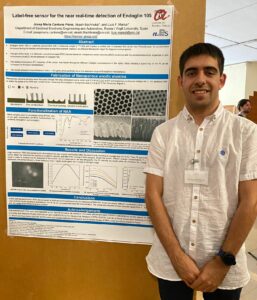
Josep Maria Cantons Pérez presented hist poster titled : LABEL-FREE SENSOR FOR THE NEAR REAL-TIME DETECTION OF ENDOGLIN 105, a work supervised by Dr. Akash Bachhuka, and Prof. Lluis F. Marsal
Endoglin (ENG-105) is a globular glycoprotein with a molecular weight of 71 kDa. It plays a central role in diseases like cancer and preeclampsia. Its concentration increases during different diseases or decreases during treatment, making it an effective therapeutic target for diagnosis and prognosis. That makes endoglin an attractive candidate as a biomarker for our biosensor. This research projecta ims to fabricate a proof-of-concept (POC) device to detect near real-time changes in the concentration of endoglin. To fabricate this POC device, nanoporous anodic alumina (NAA) was used as a sensing platform due to its intrinsic optical and geometric properties. The NAA membranes were then functionalized with gold nanoclusters (AuNCS)(<2nm) due to their advanced photoluminescence (PL) properties. This POC device was optimized at various conditions: a) NAA pore size 35 and 65 nm, b) the incubation time for both gold nanoclusters and endoglin protein-from 5 minutes to 15 minutes, c) the use of different blocking buffers-Ethanolamine and Bovine Serum Albumin (BSA), d) and the operating range of the sensor-tested from the fg/mL to the μg/mL range. Gold nanoclusters in NAA samples with larger pores (65 nm) (Figure 1a) showed a better photoluminescence signal. The POC device showed better sensitivity in the ng/mL range. The limit of detection (LOD) was observed to be 1ng/ml (Figure 1b). However, non-specific binding was still observed in the case of the control antibody. Therefore, further optimization is required to overcome the issue underlying non-specific binding
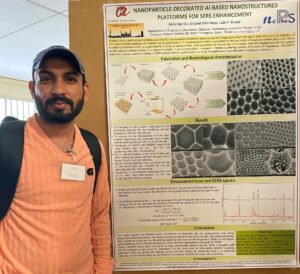 Gohar Ijaz Dar presented his poster titled: NANOPARTICLE-DECORATED Al-BASED NANOSTRUCTURED PLATFORMS FOR SERS ENHANCEMENT, a work supervised by Prof. Elisabet Xifre-Perez, and Prof. Lluis F. Marsal
Gohar Ijaz Dar presented his poster titled: NANOPARTICLE-DECORATED Al-BASED NANOSTRUCTURED PLATFORMS FOR SERS ENHANCEMENT, a work supervised by Prof. Elisabet Xifre-Perez, and Prof. Lluis F. Marsal
Surface Enhanced Raman Spectroscopy (SERS) is a powerful vibrational spectroscopy technique that allows the highly sensitive structural detection of low concentration analytes via Raman signal amplification of electromagnetic fields generated by the excitation of localized surface plasmons. When incident light interacts with a rough metallic surface or nanoparticles, such plasmons can be excited. As a result, when the targeted analyte is localized on the nanostructured surface of a plasmonic metal, there is a significant increase in Raman scattering (usually 4-8 orders of magnitude). Here, we describe the creation of variable particle size and interparticle gap Au nanoparticle arrays for SERS-active substrates. This SERS substrate may be used in a variety of SERS-based sensor applications due to its straightforward and affordable construction technique. For the formation of the nanoparticles, an Au film was deposited on the Al template using various times of Au sputtering, and then it was annealed under various conditions for different time periods.
 Prof. Lluis Marsal, as member of the steering comittee, did the closing speech of the conference.
Prof. Lluis Marsal, as member of the steering comittee, did the closing speech of the conference.
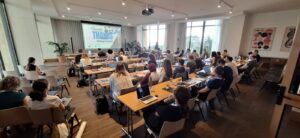
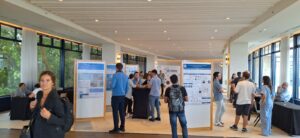
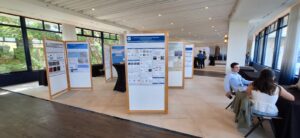
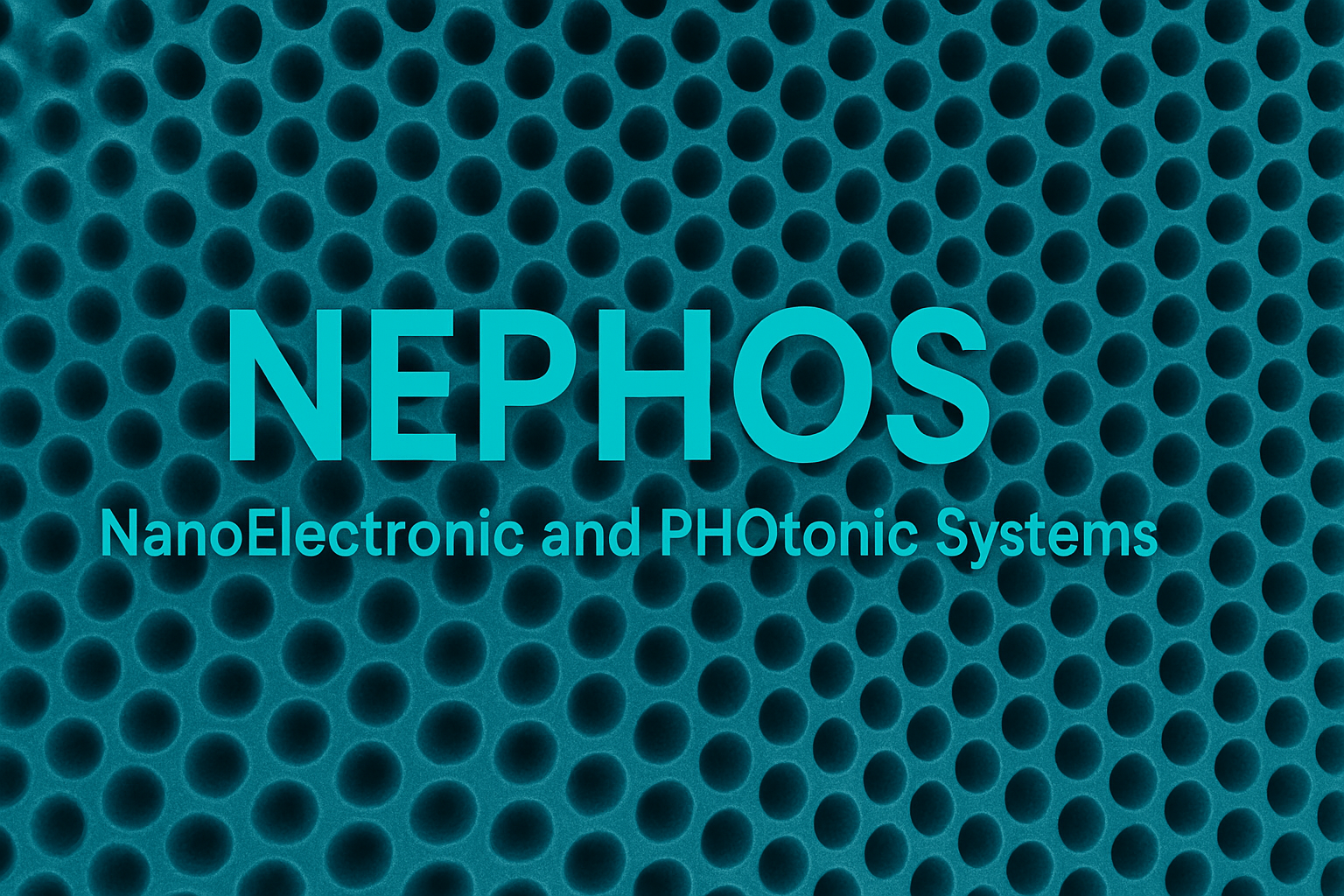
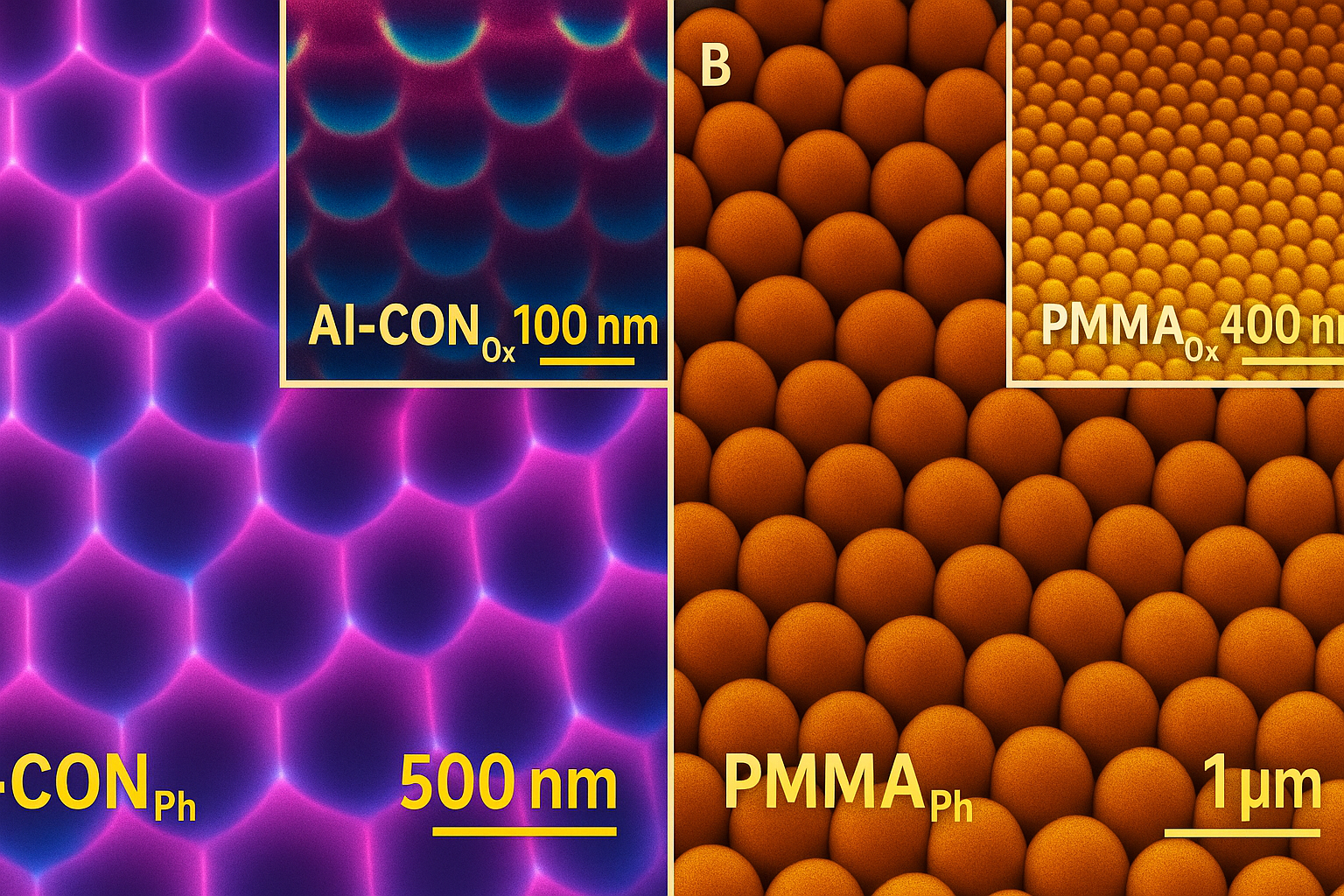

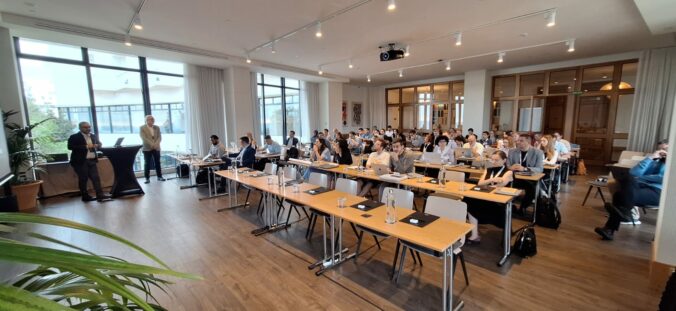
 URV’s
URV’s 
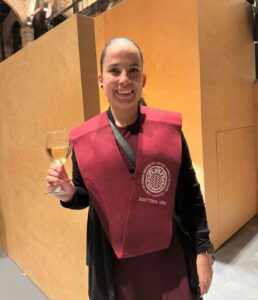 The President of the Universitat Rovira i Virgili of Tarragona, Prof. Josep Pallarès Marzal, grants Dr. Karen Acosta with the Extraordinary Doctorate Award for his PhD thesis “Engineering of photonic structures based on nanoporous anodic alumina as an optical sensing platform“, supervised by Prof. Lluis Francisco Marsal Garví.
The President of the Universitat Rovira i Virgili of Tarragona, Prof. Josep Pallarès Marzal, grants Dr. Karen Acosta with the Extraordinary Doctorate Award for his PhD thesis “Engineering of photonic structures based on nanoporous anodic alumina as an optical sensing platform“, supervised by Prof. Lluis Francisco Marsal Garví.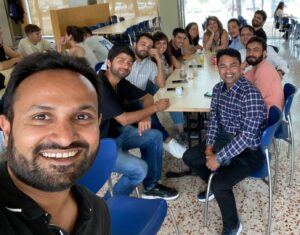 Dr. Tara Chand Yadav has just joined Marsal’s group, and coffee time was the best moment for the welcome gathering.
Dr. Tara Chand Yadav has just joined Marsal’s group, and coffee time was the best moment for the welcome gathering.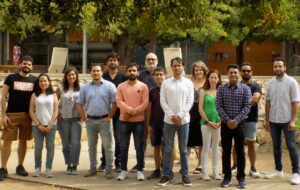 The garden of URV campus Sescelades seems like a good place for a group picture.
The garden of URV campus Sescelades seems like a good place for a group picture. Karen Acosta presented her poster titled ” EFFECT OF MULTISPECTRAL PHOTONIC CRYSTALS ON THE INTRINSIC PHOTOLUMINESCENCE OF NANOPOROUS ANODIC ALUMINA”
Karen Acosta presented her poster titled ” EFFECT OF MULTISPECTRAL PHOTONIC CRYSTALS ON THE INTRINSIC PHOTOLUMINESCENCE OF NANOPOROUS ANODIC ALUMINA”
 Gohar Ijaz Dar presented his poster titled: NANOPARTICLE-DECORATED Al-BASED NANOSTRUCTURED PLATFORMS FOR SERS ENHANCEMENT, a work supervised by Prof. Elisabet Xifre-Perez, and Prof. Lluis F. Marsal
Gohar Ijaz Dar presented his poster titled: NANOPARTICLE-DECORATED Al-BASED NANOSTRUCTURED PLATFORMS FOR SERS ENHANCEMENT, a work supervised by Prof. Elisabet Xifre-Perez, and Prof. Lluis F. Marsal Prof. Lluis Marsal, as member of the steering comittee, did the closing speech of the conference.
Prof. Lluis Marsal, as member of the steering comittee, did the closing speech of the conference.
